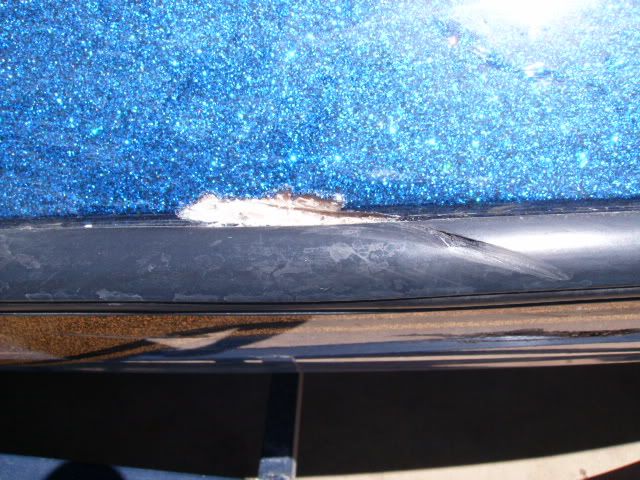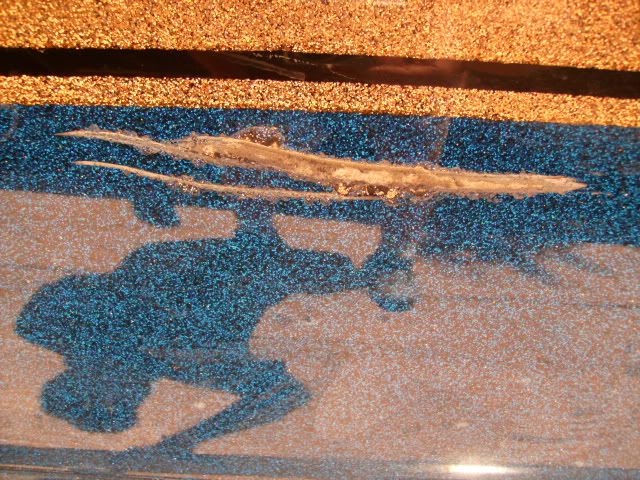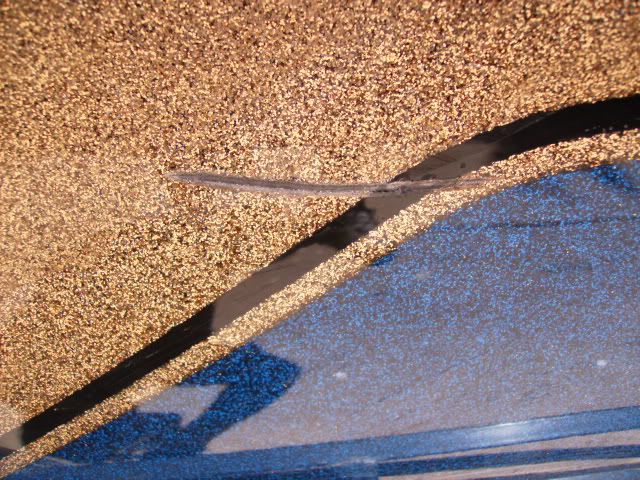Re: Recommendation for Repair
After reviewing the photos again it looks as though the base color is black if i am not mistaken. I looked at this how to and you guys tell me what you think?
http://bwbmag.com/output.cfm?id=1015381§ionid=308
Seems pretty straight forward and all i need to do is apply the black backup pigmented gel-coat which i do have btw. I just need to re-order some more clear metalflake gelcoat from US composites or buy it here locally somewhere.
Seems like the thing to do would be this and someone tell me if i am wrong--Cause I probably am....I re-wrote it to the way I would use this.
Repair of Polyflake Gel-coat !! as taken from the above passage that was written in 2005. --My version as needed on my boat only.
1) The very first step is to thoroughly clean the damaged area with acetone. Why acetone? Because it works well and evaporates quickly.
2) After the wound?s dry, gently wet sand a small area around the scratch with 1200 grit wet-or-dry sandpaper.
3) Clean the area again with acetone and let it dry. Inspect the sanded scratch carefully; you don?t want any chalky residue or debris in the scratch. The new clear coat will magnify anything you missed.
4.) Then take your razor blade and a bright light, and wet the scratch with a little bit of water. With the light, you?re gonna see the wet silver little metalflakes that are sticking up. You?ve got to pick out every one of those little flakes. Use the tip of a utility knife blade to get under the flake and flip it up.
5.) Wet sand around the area with 600-grit wet-or-dry sandpaper to make sure the Clear gelcoat(in my case it would be Neutral Gel-coat with black pigment) you?re about to put on is going to adhere to it. And everywhere that you picked out a flake, you?ve got to put another flake in its place.
6.) Once it?s clean, mix up a small quantity of Neutral Black gelcoat and hardener (catalyst) and fill in the scratch.
7.) If you?re fixing a vertical area(which I am), try blowing them on with a soda straw. Don?t have all the flakes laying one direction.
My real questions come here--if you only apply this once and then lay the wax paper over it--you really only have one layer to work with and when you wet-sand it you will turn those polyflakes a silver color and then you have lost your color of polyflake??? - I would assume you would apply several coats of clear over this initial polyflake that way when you go to wet-sand you don't ruin the look of the newly applied polyflake(gold and blue)...??? Kinda second guessing myself here.??
8.) Now cut a piece of plain ol? wax paper a little larger than the repair and tape the wax paper over the area. Take a small straightedge ? a single-edge razor blade works well ? and drag the edge of the blade over the repair, to smooth out the new gelcoat. Gelcoat cures via a chemical process and will remain sticky if you allow it to air dry. Also, wax paper won?t stick to the clear gelcoat? and it?s cheap.
9.) Pick up your stuff, walk away from the boat and let the gelcoat dry overnight.
10.) Then, carefully buff it out with regular (stage 2, medium) compound. You can get the compound at any automotive shop. That?ll get you a passable scratch repair, doing it yourself.
What do you think???

























